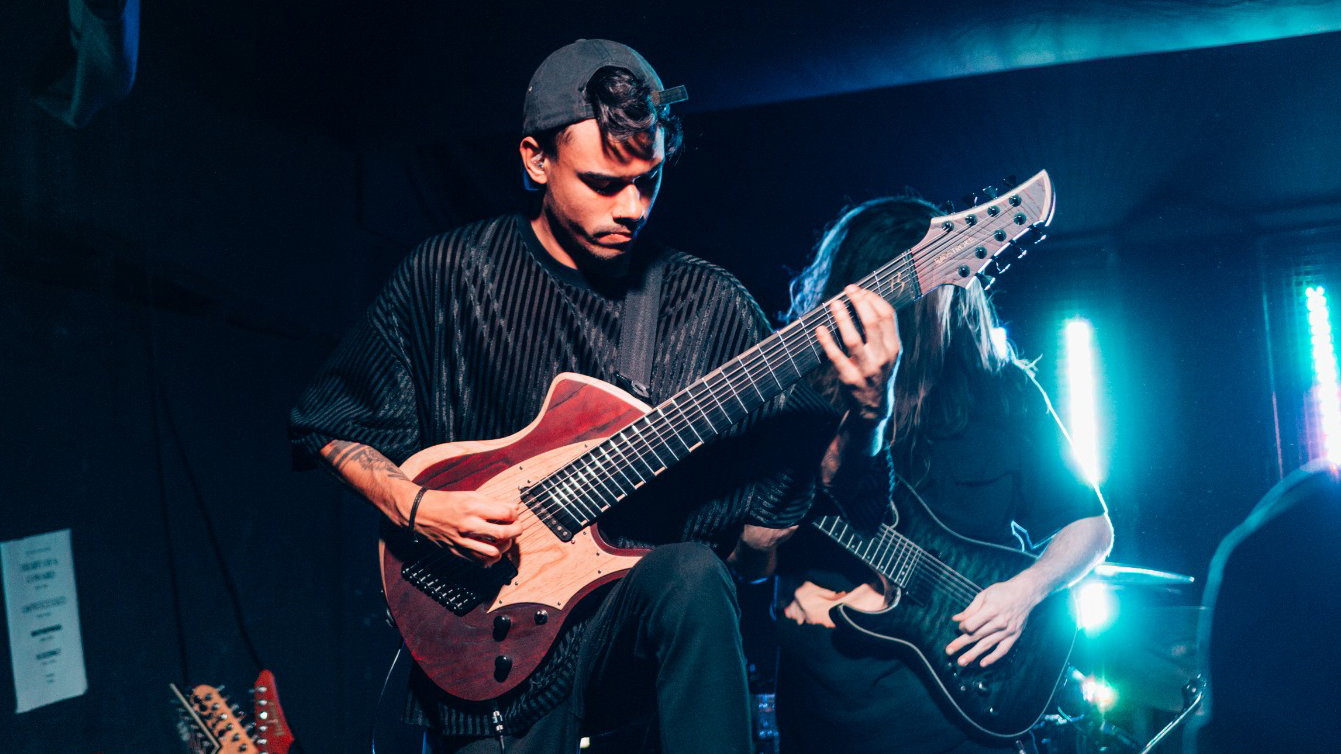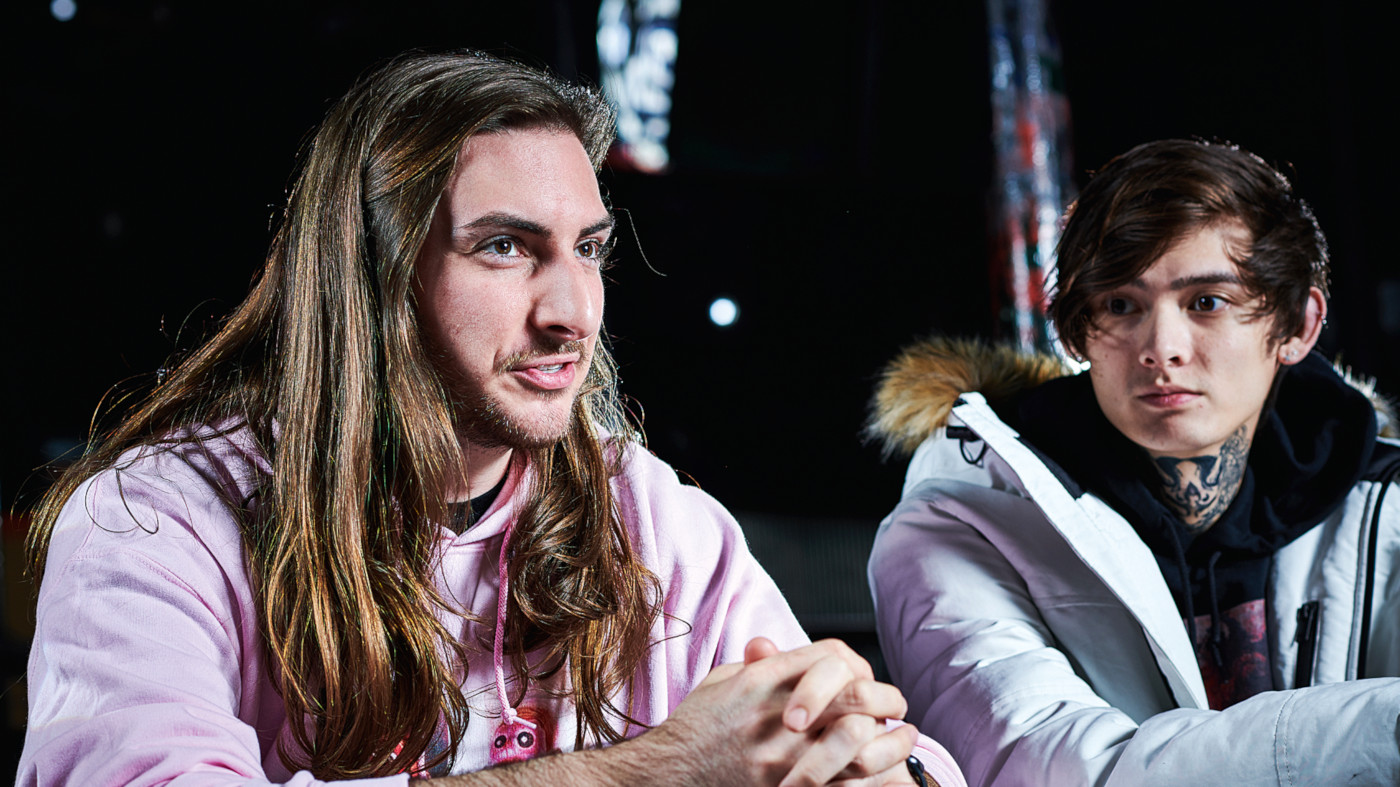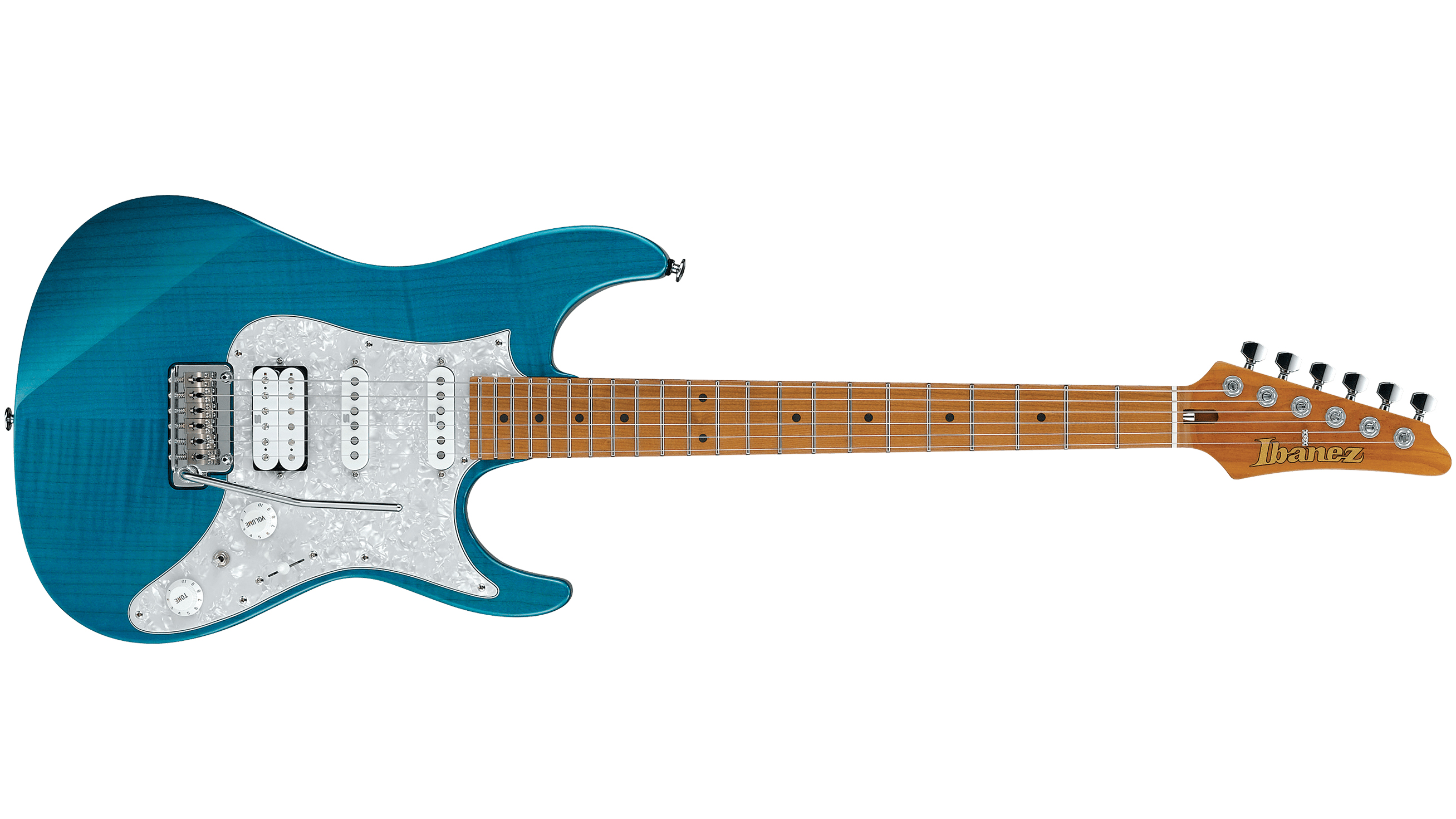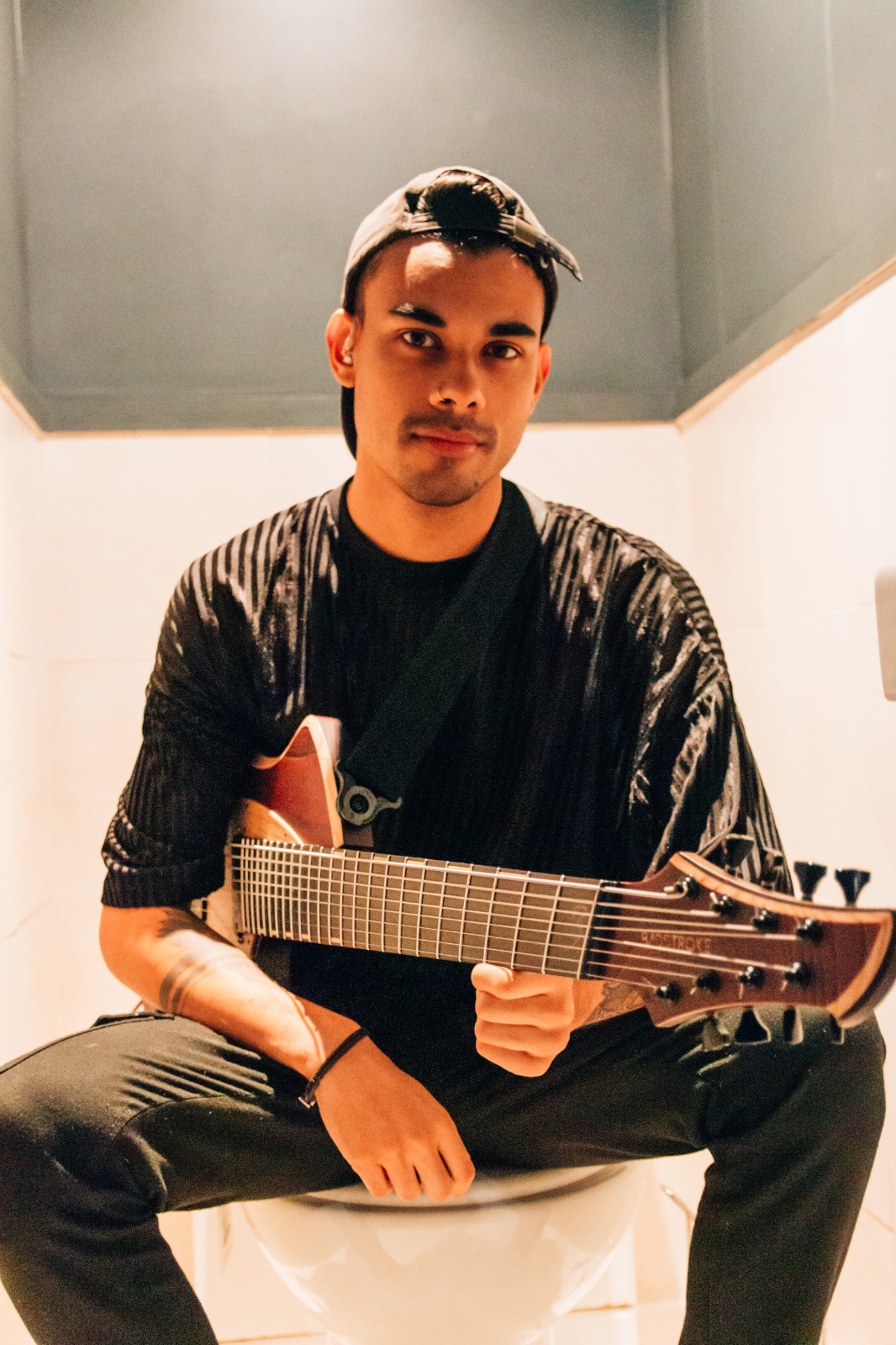"If you are good at something, go big on it" – rising guitar star Manuel Gardner Fernandes talks tone, technique and controversy
The Unprocessed guitarist found himself in the centre of an online storm last year, but he's put it all behind him in 2020

German guitarist Manuel Gardner Fernandes did not expect to end 2019 caught in the middle of a scandal.
When videos were uploaded by other online guitarists – most notably Jared Dines – accusing him of ‘faking’ his frequently jaw-dropping playing videos, the 24-year-old Instagram/YouTube star felt shocked and quite rightly concerned about his reputation and future.
He eventually released a statement to “clarify some stuff as there’s been a lot of bad things going on with my name and my face all over the internet” and confirm “there was never a video that was sped up”, along with some live performance clips to prove his talents are definitely real.
A photo posted by @manuel.gardner.fernandes on Dec 31, 2019 at 7:39am PST
And while he expressed his dismay about some of the things being said about him, he kept his cool and chose not to get drawn out into any sort of public war – commendable considering what was at stake.
Now the dust has settled and it’s all behind him, he’s started the new year doing what he does best – focusing on music and melting minds with his tapped harmonic wizardry. That said, just for a bit of fun, he decided to release a shirt for his band Unprocessed making fun of the “Hands don’t glitch like that” accusations and turn something negative into a positive...

“We made that shirt to get over this whole fake Instagram guitarist bullshit,” he says, just after completing a UK tour with Polyphia. “I wanted to end this war between me and Jared and other YouTubers. It seemed like a great way of bringing out new merch and making fun of the situation. Even Jared thought it was funny, we’re all cool now and there is no beef at all.”
Here he talks to MusicRadar about his two-handed techniques, musical influences and the secrets behind his production style...
Want all the hottest music and gear news, reviews, deals, features and more, direct to your inbox? Sign up here.
You recently uploaded a picture of you with Polyphia’s Tim Henson hinting at a future collaboration…
“Yeah… it could be pretty sick! We have talked about doing something, we’re not quite sure when it will all happen but there will definitely be a collaboration. I love everything about Tim’s playing, he’s very tasteful. I love playing with them, all the shows have been great and the whole package makes sense, both personally and musically.”
What if we made music together Manuel Gardner Fernandes
A photo posted by @manuel.gardner.fernandes on Feb 18, 2020 at 7:51am PST
What is it that you admire most in his playing?
“I’d say he comes from the same genre and mindset as me, we both started out as metal players and then ended up combining it all with different elements from other genres. He did this whole vocoder thing on guitar and it sounds amazing.
"The solos are mind-blowing. I think he has the biggest talent for writing massive guitar hooks, so he’s definitely someone I admire. Him and Scott are quite the team! What I love about Polyphia is that it’s both of them writing together. Tim tends to be more of the chorus guy and Scott is probably more responsible for the verses... so that’s a great fit for two guitar players!”

There are definite similarities in how you blend genres. What made you think more openly stylistically?
“It came through listening to a lot of music. I’m not really huge on instrumental music, so I listen to a lot of pop and jazz and then thought I’d combine it with the whole metal speed kinda thing. And I think the metal side is still the most obvious one, it’s just delivered through a cleaner tones and chord-based riffs.”
Tell us more about these metal influences…
“I started playing guitar really young, maybe around three or four years old. It was my dad who got me into the whole metal thing – bands like Metallica, Terror or Iron Maiden. I looked up to players like James Hetfield, Dimebag Darrell and the Maiden guys.
"Eventually, I uploaded my first video to Instagram and that was only a year ago, maybe a year and a half. I’m still quite new to Instagram! I guess my main influences for those videos were Ichika, Mateus Asato and Tim Henson – those were the guys I looked up to on Instagram. Every time I uploaded something I’d rewatch their ones, to see how they made it or wrote their captions and hashtags.”
A photo posted by @manuel.gardner.fernandes on Feb 17, 2020 at 1:19pm PST
It’s pretty incredible how big a profile you’ve created in such a short space of time…
“For me it happened really quick. It’s an opportunity to get your music out there without a record deal or any of that kind of support. If you have a good following and fanbase it’s a good opportunity to make money. You can make profit out of your music or profile as a musician and, for some, even live off it.”
The tapped harmonic approach seems to be one of most recognisable techniques…
“I think every player should start focusing on their own guitar style. That’s the most important thing in terms of stepping out as a guitarist.
"There a lot of us out there and the market is kinda full. If you are good at something, go big on it – whether that’s simple vibrato over simple phrases or down picking or economy picking or whatever. But it’s really important to hone in on your style and uniqueness. That’s the only way to stand out.”
Well, it definitely seems to be working!
“I guess I just love the whole harmonic thing, which is why I really went all-in with that stuff and tried my best to sound weird. For example, if I play a B on the second fret of the A string, I might tap the 14th fret octave on the same string. But I’m not actually fretting that note, I’m just touching it very slightly and precisely on the fret to get that harmonic ringing clearly.
"The better you get at it, the more you’ll be able to play whole chords and melodies that way, mirroring both hands together – either 12 frets up, or seven frets up or five frets up. It’s all about experimenting with those harmonics for me. It can make a very normal chord sound so much more beautiful. It makes you sound wider, fuller and more interesting. Using those sounds and open strings can open up new world.”
Where did the two-handed influence come from?
“Ichika was a big part on that side of it. Through him, I learned it’s very important to have the same consistency and energy across both hands. When I started doing it, I didn’t have the same power on my left hand. I was very right hand-focused.
"So I started working on my legato to build that kind of energy from my left hand, without needing anything from my right hand. That built and built, eventually I manage to even it all out across both and become more consistent.
"The best advice, for pretty much whatever technique you are learning, is to keep your patience and start slow"
"The muting is very important too, using both hands helps me make a very dead sound where needed – though I have to point out every pair of hands and guitar is different. People have different muting techniques, but using both really works for me.
"The best advice, for pretty much whatever technique you are learning, is to keep your patience and start slow. You can’t be a speed king right away, you have to develop. The same goes for sweeping – I tried too fast and the beginning at found it so frustrating. I was trying to play along to certain songs and couldn’t keep up.”
Given the usage of your guitars natural harmonics and overtones… have you ever thought about going acoustic?
“Actually, I have thought about it… there are one or two acoustic videos I’ve put on my Instagram. But I don’t actually have an acoustic at home, so if I had one, maybe I’d do more. I actually started out on classical, so it would be a fun experiment to go back to my roots.”

Your main guitar right now is a blue Ibanez AZ2204F Prestige. What drew you to that model?
“I just love the AZ series. Those guitars have the ability to bring out every note I play in the cleanest way. The Seymour Duncans sound great and the tonewoods are amazing.
"The mechanics of the instrument as a whole are great. It’s very clean-sounding, so that really helps with my tapped harmonics. And then there’s vintage style trem, because I’m not the biggest fan of Floyd Rose bridges. They hold really well!”

You’ve also been spotted playing an 8-string monster with fanned frets made by Bad Stroke. How did that come about?
“It is a monster ha ha! I love it. I think it was the first guitar I tried out with fanned frets. It’s really handy for the whole tapping thing because I don’t have to stretch my fingers as much. Every fret is closer at the end, which is really comfortable for me to do all that stuff.
I like using it for leads too… especially higher up the neck. I also really like the single-coil split. I asked them to make me a proper Stratocaster style pickup to get that sound… you don’t really find them on eight-string guitars. Then there’s the shape… it just looks beautiful. And I have to admit there aren’t many good-looking eight-string guitars out there, they look kinda wrong with so many strings. But this one looks and plays beautiful.”
Butterflies 🦋 Manuel Gardner Fernandes
A photo posted by @manuel.gardner.fernandes on Feb 4, 2020 at 8:44am PST
What kind of warm-up exercises do you use before playing a show?
“I usually play the hardest riffs or licks from the set before I go on, just to warm up. Quite often it will be the most challenging parts of the first song as that’s the one which I’ll be the least warmed up for. Or I might just play the whole of the first song over and over again. It’s exciting to walk out on stage for that first song but it can also tend to be a bit more messy than the second or third songs.”
"I send only the DI to a return chain, which is then highly compressed so you can really hear every little movement"
A big part of your sound is how you split your processed signal against a DI…
“That’s ultimately my main secret. I’ve been using the Archetype Plini plug-in because I love the reverb. Then I send only the DI to a return chain, which is then highly compressed so you can really hear every little movement. Then I boost the highs at around 7-9 kHz, so it’s quite top-heavy.
"I boost the highs to keep the string sound because when you play an electric unplugged you only hear the higher frequencies coming from the strings – they don’t really have that crazy low frequency range. It’s more around 5 or 6Khz. That’s what I was searching for, boosting that particular sound of the strings - in order to sound different as well as bring out more notes. It can be hard sometimes because you hear a lot of other noises too!”
How much does music theory play a part in what your riffs or leads?
“I’m pretty bad with theory. There are some things I’ve learned in college but I still need to figure it all out. So when I play right now, I don’t really have any theory in mind… I just play what sounds and feels right. It’s more of a practical approach I guess. I admire people that understand theory. I have some friends that use pure theory to write and it sounds great… but I think you can also hear it in the music. You can tell it’s coming from a more educated place and that might suit some people. It all comes down to each individual player.”
You can follow Manuel on Instagram and find out more about Unprocessed over at unprocessed.bandcamp.com
Amit has been writing for titles like Total Guitar, MusicRadar and Guitar World for over a decade and counts Richie Kotzen, Guthrie Govan and Jeff Beck among his primary influences. He's interviewed everyone from Ozzy Osbourne and Lemmy to Slash and Jimmy Page, and once even traded solos with a member of Slayer on a track released internationally. As a session guitarist, he's played alongside members of Judas Priest and Uriah Heep in London ensemble Metalworks, as well as handling lead guitars for legends like Glen Matlock (Sex Pistols, The Faces) and Stu Hamm (Steve Vai, Joe Satriani, G3).
